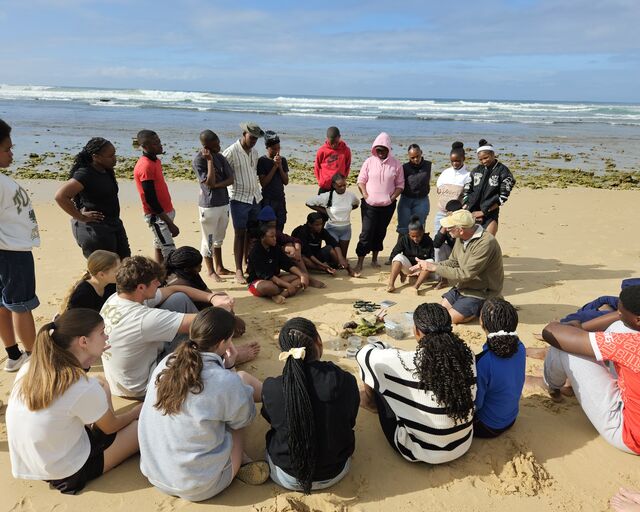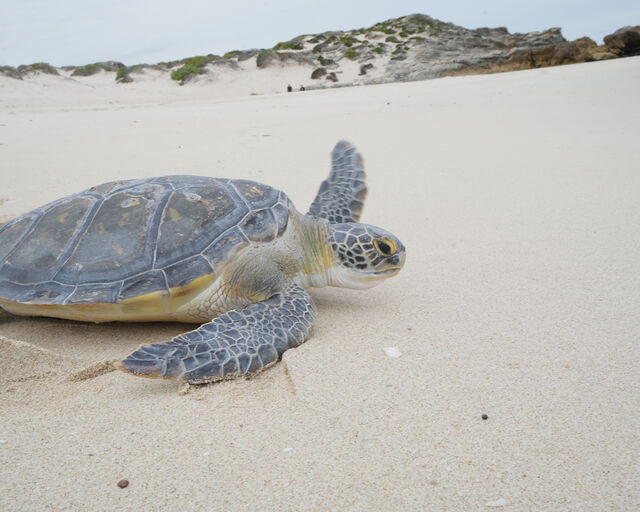Abalone, or perlemoen as it is known in South Africa, is the name for a group of large, flat sea snails of the genus Haliotis. That may not sound remarkable, but these animals have come to champion marine conservation by showing the world the dangers of overfishing.
When South Africans refer to perlemoen, we are usually thinking of the Midas ear abalone (Haliotis midae), but there is a whole lot more to abalone than this one species. Threatened by poaching, poor fishery management, and invasion by non-endemic species, these slow-growing animals are at severe risk of further decline in South African waters. By understanding abalones, we can play a role in securing their future.
What is abalone?
Abalones are molluscs, a family that includes clams, mussels, sea slugs, and octopuses, inhabiting a range of coastal waters across the world.
Their classification as gastropods (meaning "stomach on foot") helps us understand how they are built. Their soft bodies mostly comprise a very large, muscular foot. The outer edge of the foot is a sensory organ called an epipodium, covered in tentacles. The appearance of the epipodium differs according to the species of abalone!
The abalone's organs are arranged in a circular pattern between the foot and the shell. At the centre lies a strong shell muscle that keeps the shell attached to an abalone's body, while the characteristic holes in the shell allow the abalone to vent water through its gills. The gill chamber is also used to eject waste into the water. Its largest organ is its gonad, the reproductive organ found opposite the shell pores. The gonad takes on colour when the abalone is sexually mature - pale in males and dark grey-green in females.
On its head, an abalone has a pair of eyes and large tentacles, which it uses to find algae to feed on. Inside its mouth is a large, rough tongue used to file food off rocks and break up kelp. Abalone does not have a centralised brain, but the network of nerves throughout its body serves the same function.
Unlike most sea snails, with their shells in a signature spiral shape, abalones' shells remain flat and open. In fact, their ear-shaped shells are instantly recognisable. They are thickened with layers of nacre (mother-of-pearl), making up beautiful, iridescent layers.
The 5 South African abalone species
Perlemoen (Haliotis midae)
Haliotis midae is the largest of the five abalone species found in South Africa, and the one most people think of when they hear perlemoen. It can grow up to 23cm across.
Its shell is corrugated, with "furry" projections of simple tentacles protruding from it's edge. It inhabits shallow reefs, feeding on kelp and red algae along the coasts of the Western and Eastern Capes.
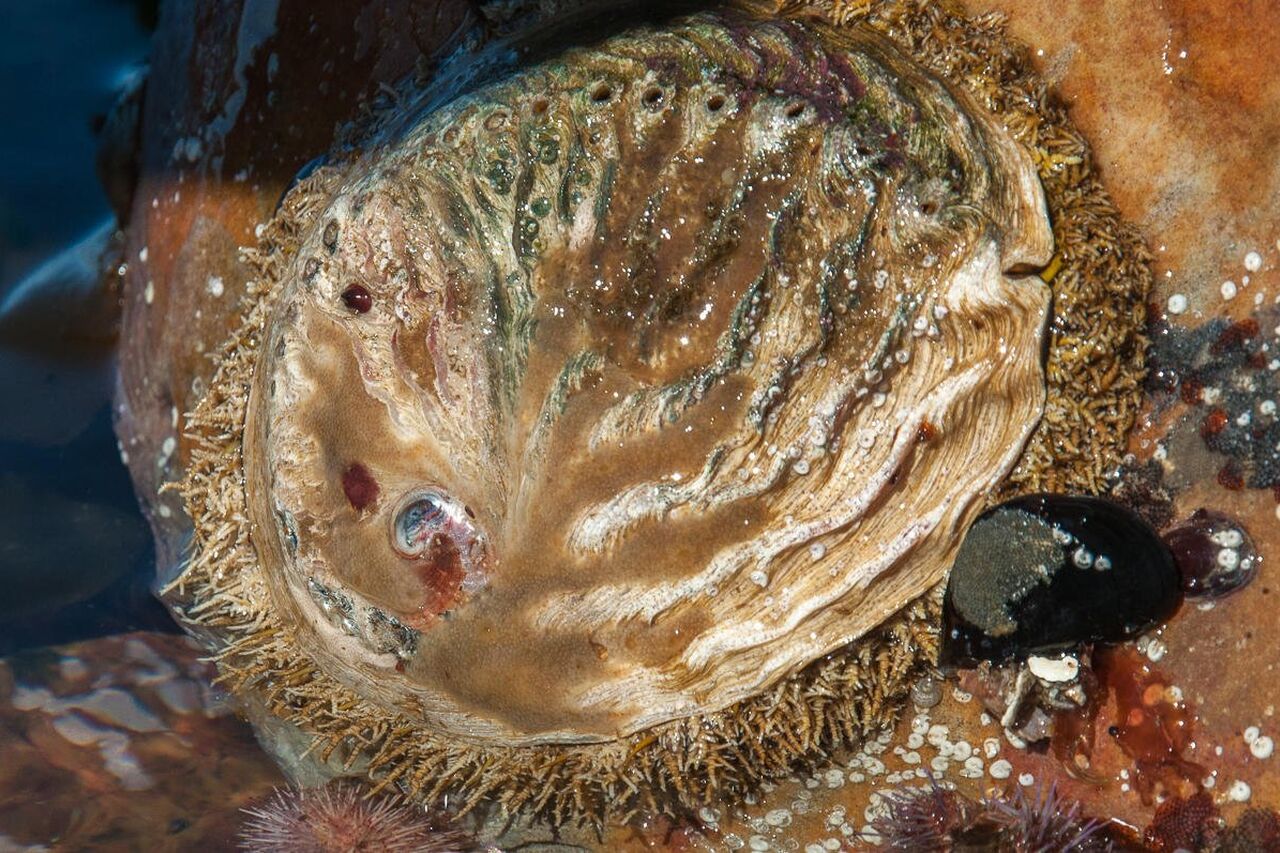
Spiral-ridged siffie (Haliotis parva)
Often referred to as a siffie or small sieve, this is the smallest abalone species. Spiral-edged siffies rarely grow beyond 45mm and is notable for the large hump that traces the spiral of its shell. Its shell is a mottled orange-brown, and its head has bright orange tentacles.
This species is found under rocks and in rock pools in the Southern Cape and parts of the Eastern Cape.
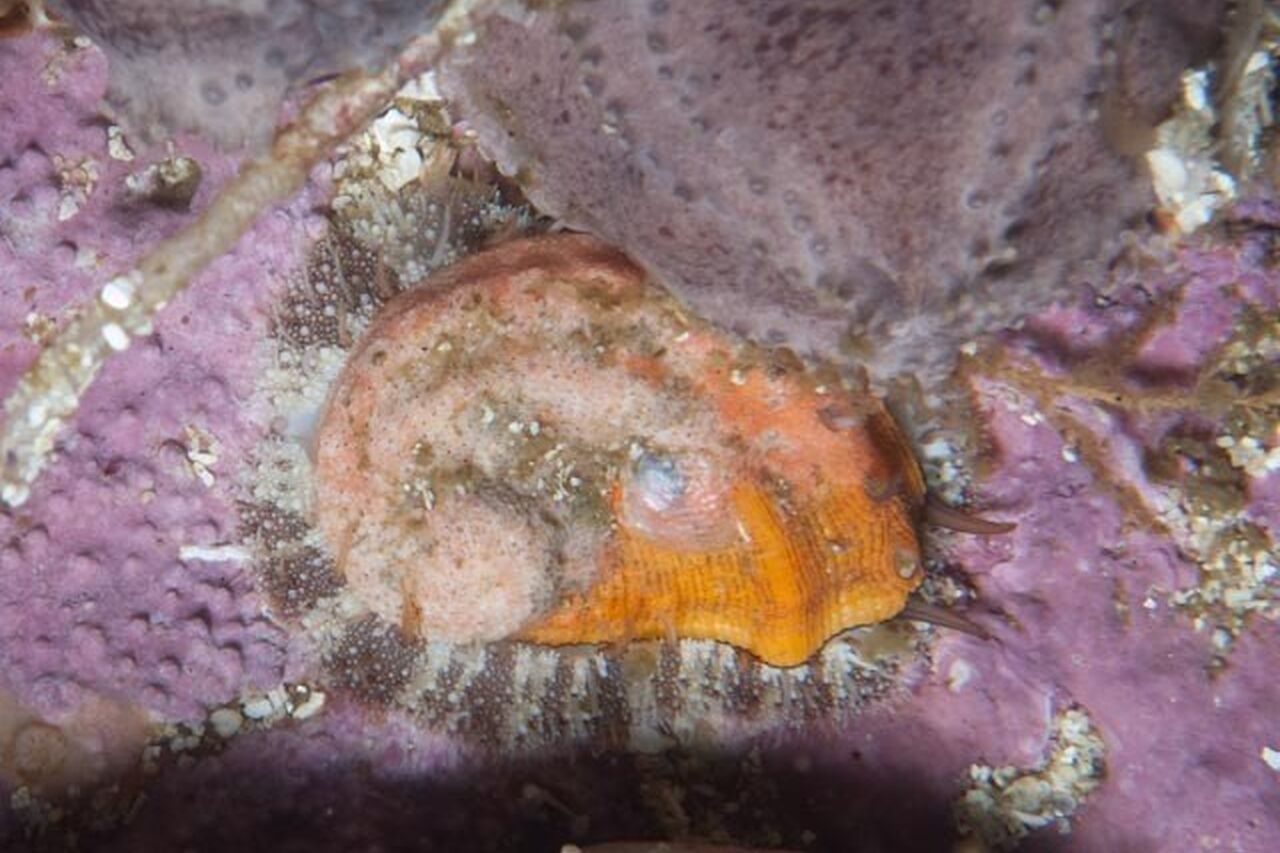
Venus ear abalone (Haliotis spadicea)
This abalone's shell is commonly stained with red blotches. It is small, rarely growing larger than 8cm.
The Venus ear lives in rocky crevasses along the coasts of the Southern and Eastern Cape, feeding on red algae.
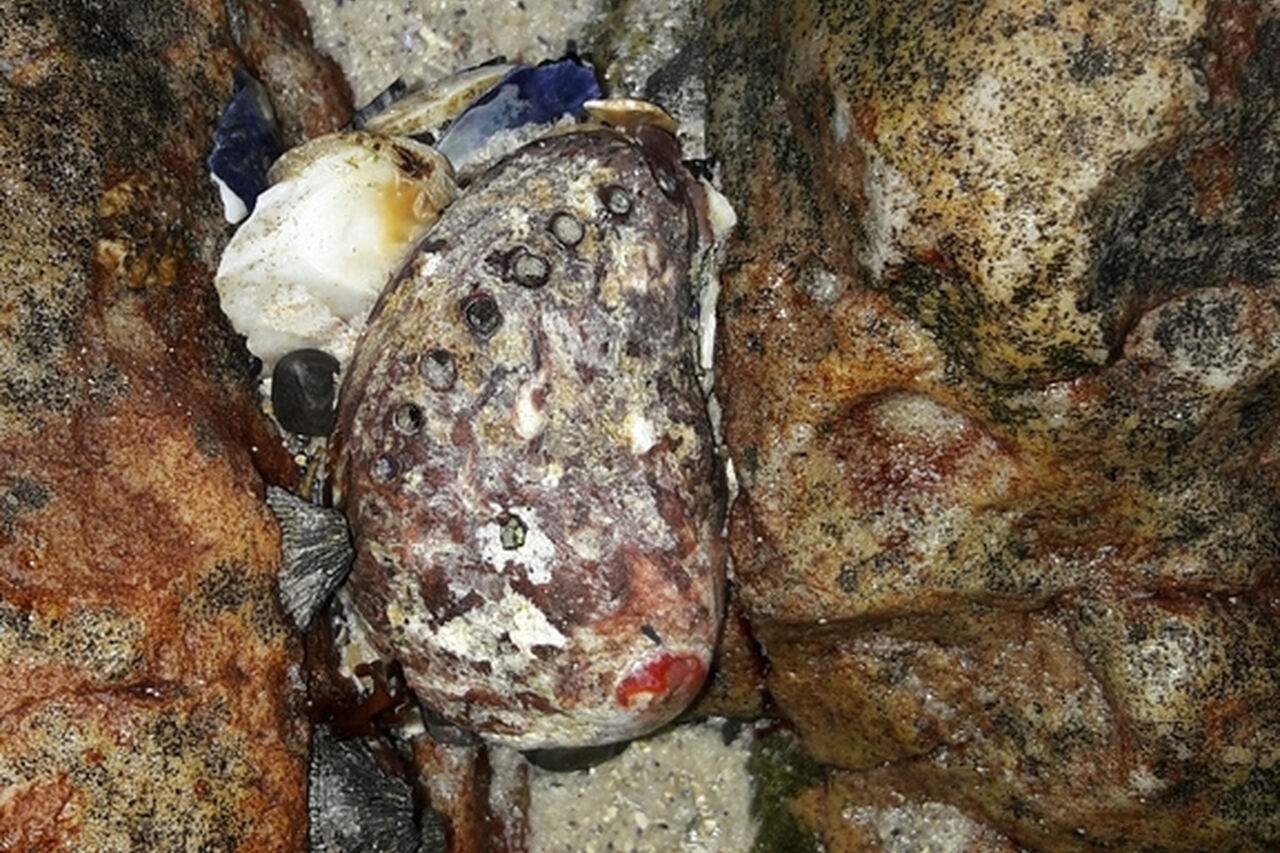
Quekett's abalone (Haliotis queketti)
Quekett's abalone is similar in size and distribution to the spiral-ridged siffie but is slightly larger and occurs a bit further east along the South African coast.
It is a rare species, but easily identifiable by the prominent raised ridges along the edge of its shell and by its spirals.
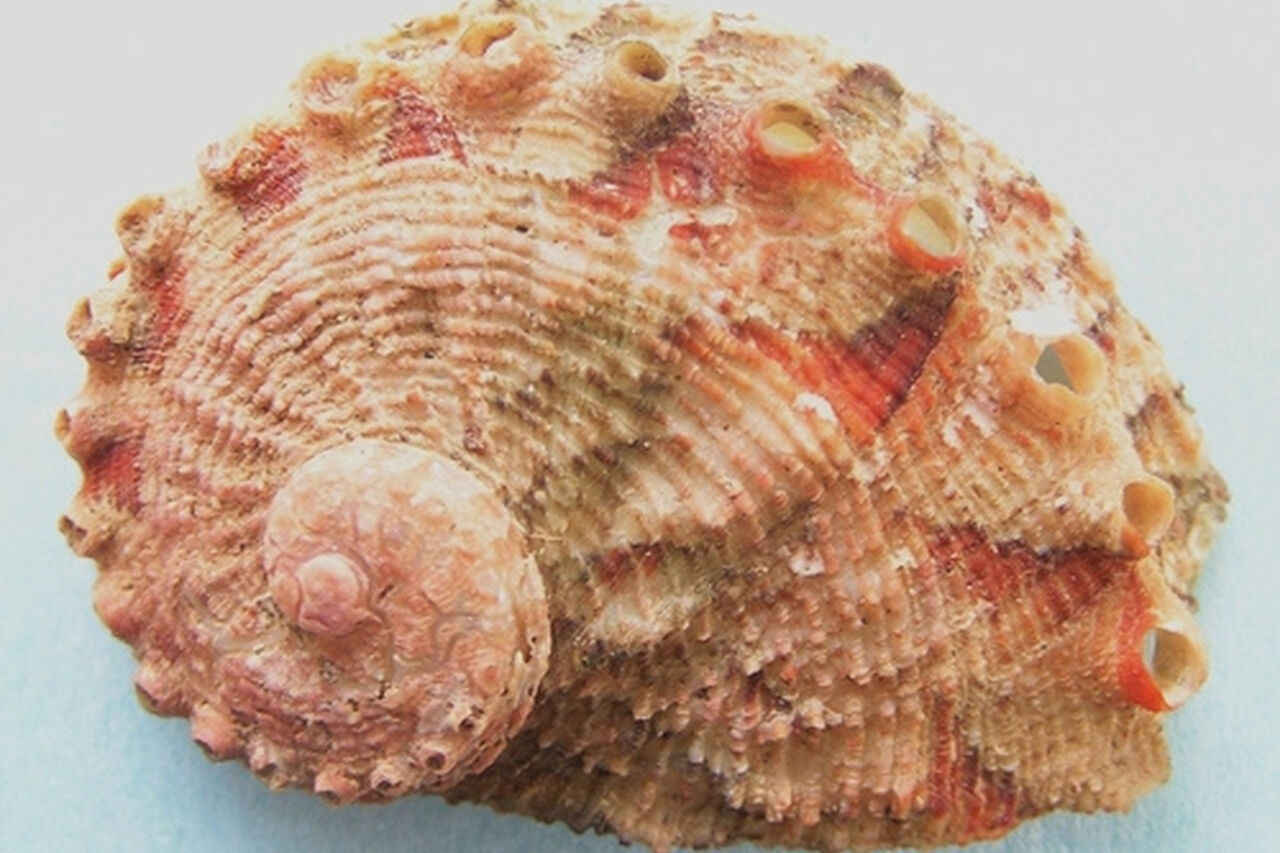
Beautiful ear-shell (Haliotis speciosa)
This is a very unusual and rarely observed species of abalone. It has a smooth, mottled grey shell and is small, only growing up to 9cm.
It inhabits shallow waters on the coast of the Eastern Cape and KwaZulu-Natal.
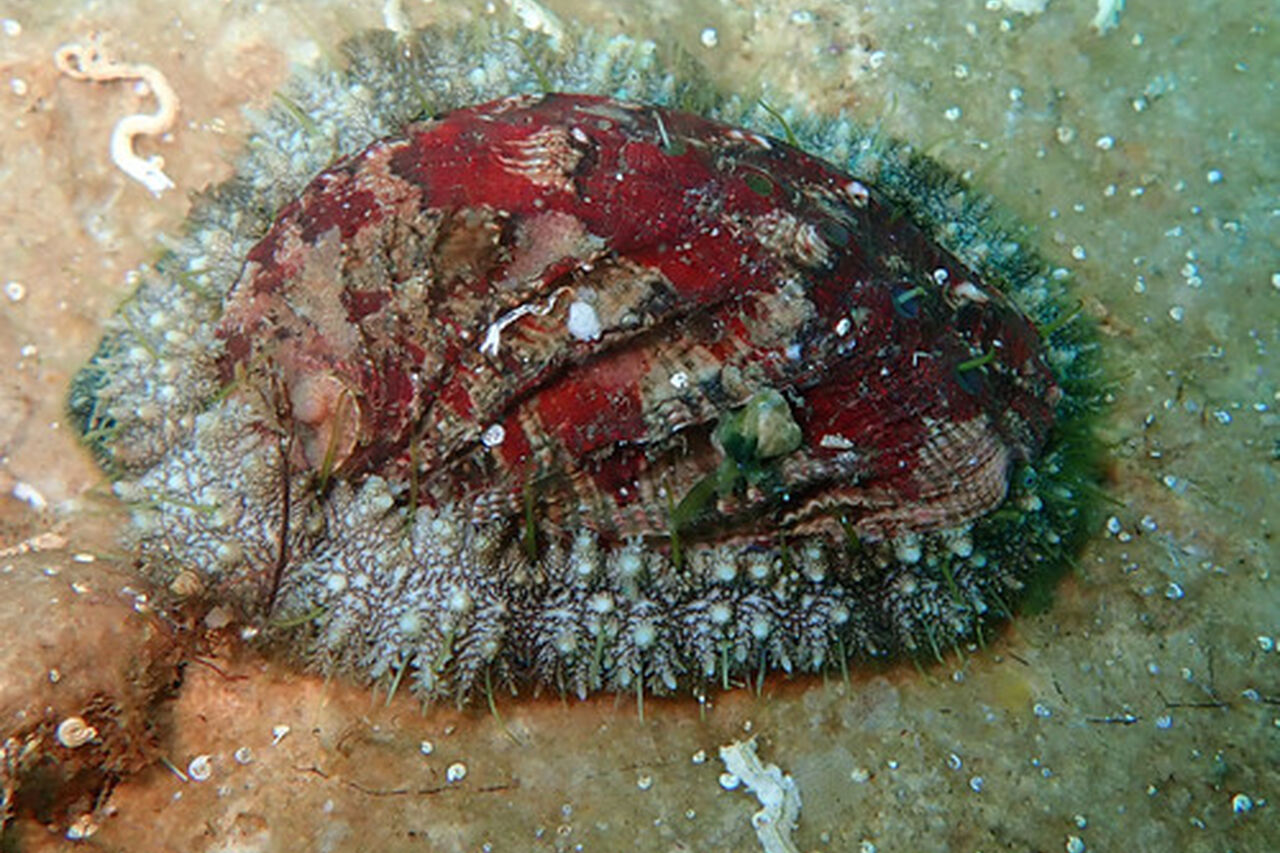
What do abalone eat - and what eats them?
All abalone species eat algae, and mature adults prefer scraps of kelp. Abalones are quite lazy and prefer to remain in a small area and wait for kelp scraps to drift by. However, they will move when there is a change in season or water quality, or when food is scarce - a change in their shell colour usually indicates a new food source. Juvenile abalone cannot grip the scraps of kelp, so they rely on films of bacteria, algae, and micro-organisms on rocks for nourishment.
In nature, abalone are at risk of predation at all stages of their life. In particular, their eggs and planktonic larvae are eaten by filter feeders like barnacles, bivalves, and shrimps. Juvenile abalones hide in cracks or under the spines of Cape sea urchins during the day, but foraging at night leaves them at risk of predation from octopuses, sea stars, crustaceans, snails, and durophagous (shell-swallowing) fish. Adult abalones are at risk of predation by a few large predators, such as rays and sea otters. However, humans pose the greatest threat to mature abalone and are responsible for their current population decline.
What does an abalone's lifecycle look like?
Abalone are "broadcast spawners", meaning their eggs and sperm are released into the ocean and fertilisation occurs in the water column. This spawning is synchronised by temperature, season, or a full moon - different species use varying indicators. A fully grown abalone can release tens of millions of eggs in a single spawn.
Eggs hatch into tiny larvae that swim freely in the water for a few weeks, using miniscule hairs to propel themselves. Eventually, these larvae settle on the sea floor and shed these hairs - immediately beginning the production of a shell. Survival rates are very low, and it is estimated that fewer than one in 10 000 abalones survive to maturity (even before taking into account human threats).
A species at risk
WWF's SASSI has placed abalone on the Red List, meaning you should not buy this species. Abalones take eight to 10 years to reach "legal" fishing size in designated commercial zones. However, they grow slowly and can take up to seven years to reach sexual maturity. This means the regulations are unable to ensure that abalones have sufficient time to reproduce in the wild before being harvested. If a species cannot reproduce before being harvested, its numbers cannot recover. On top of this, abalone's small size and high commercial value have led to prolific poaching - there is an enormous illegal market for abalone, sometimes referred to as white gold. Fishing is poorly regulated and despite best efforts, abalones are ineffectively managed.
Juvenile abalones depend on Cape sea urchins to survive - they follow the urchins around, hiding under their spines for protection from predators. However, an unprecedented influx of West Coast rock lobster to Cape ecosystems has greatly reduced the urchin populations. This leaves the young abalones exposed. The influx of rock lobsters, which previously only inhabited the West Coast and rarely rounded the Cape Peninsula, has not been thoroughly explained. However, increased pressure on the rock lobster population caused by water pollution and climate change is likely responsible for this migration. The relationship between kreef, urchins, and abalones highlights the intricacies of ecosystems and how susceptible they are to human actions.
Abalone is also commercially farmed in South Africa. SASSI recognises this as sustainable and has listed commercially farmed abalone on the Green List. If you'd like to enjoy abalone as a meal, ensure it is sourced from a sustainable aquaculture source. Abalone farmers in South Africa are cooperating to ensure that the gene pool of captive farmed abalones remains diverse - an important type of conservation if farmed abalones are ever needed to replenish the wild population.
The threats facing abalone are not uniquely South African, nor are they limited to Haliotis midae. In the USA, overfishing of white abalone (Haliotis sorenseni) that started in the 1960s has done so much damage that despite 30 years of intensive conservation efforts, its numbers have not recovered and extinction seems inevitable. Similar trends are seen in other large abalone species - pinto abalone, black abalone, green ormer, pink abalone and others are facing similar declines.
Related News
Sign up to our Newsletter
Receive monthly news, online courses and conservation programmes.
